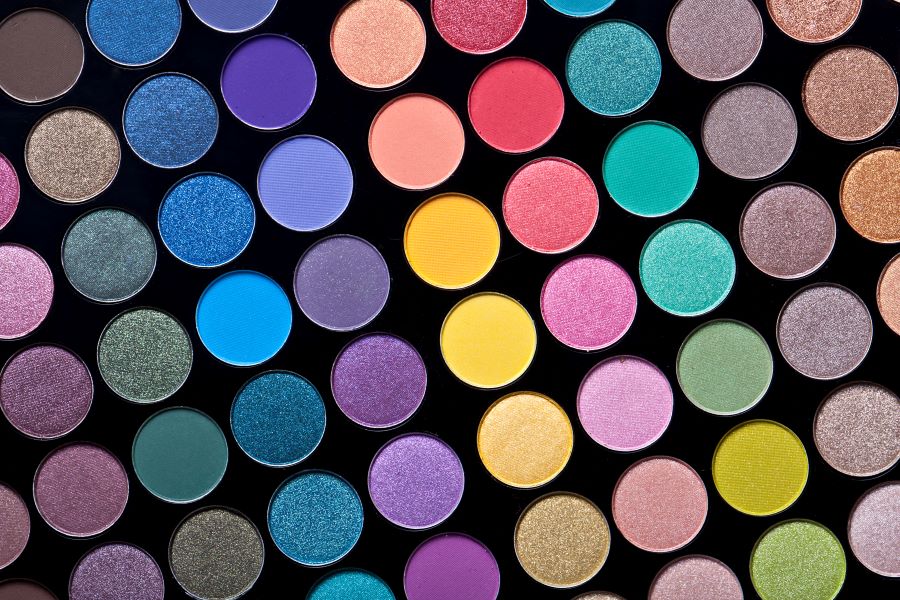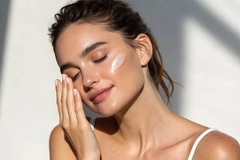US cosmetic colorant regulations tighten under MoCRA, impacting formulations and safety protocols

Cosmetic colorants are in the spotlight as US regulation reshapes their use in cosmetics.
The Modernization of Cosmetics Regulation Act of 2022 (MoCRA) expands the FDA’s oversight and demands ingredient transparency.
Speaking to Personal Care Insights, Elisa Esteve Codina, safety and regulatory affairs manager at Cosmeservice, explains the new safety substantiation, mandatory adverse event reporting and consumer protection.
What are the most significant recent regulatory changes in the US concerning colorants in cosmetics, impacting product formulation?
Codina: MoCRA represents a significant update to the regulatory framework governing cosmetics in the US, as part of the Food, Drug, and Cosmetic Act. The Modernization of Cosmetics Regulation Act of 2022 (MoCRA) itself does not provide a specific list of colorants that are allowed or prohibited in cosmetic products; this was already established by the FDA.
Instead, MoCRA establishes a broader framework that enhances the FDA’s authority to regulate cosmetic products, including their ingredients and colorants.
The FDA continues to use existing regulations under the Federal Food, Drug, and Cosmetic Act (FDCA) to determine which colorants are permitted or prohibited in cosmetics.
Before MoCRA, the FDA’s regulation of colorants in cosmetics was relatively limited, with a focus primarily on pre-market approval for certain color additives and enforcement actions for non-compliance. MoCRA now brings several new provisions and changes to the regulatory landscape for colorants in cosmetics. New specifications about colorants under MoCRA include:
Enhanced safety Substantiation Requirements: Under MoCRA, cosmetic companies must ensure and maintain documentation demonstrating that their products are safe, including colorants. This documentation must include evidence that the colorants used do not pose a health risk under the intended conditions of use.
Mandatory reporting of adverse events: Companies are now required to report serious adverse events associated with their products to the FDA, which includes any issues or health concerns linked to colorants. This requirement aims to improve post-market surveillance of cosmetic safety.
Increased regulatory oversight and enforcement powers: The FDA now has broader authority to regulate cosmetics, including color additives. It can inspect records, suspend registrations, and mandate recalls if it determines a cosmetic product, including its colorants, presents a threat of serious adverse health consequences.
Mandatory facility registration and product listing: Cosmetic manufacturers, including those that produce or use colorants, must register their facilities with the FDA and submit product listings. This allows the FDA to maintain a comprehensive inventory of cosmetic products and ingredients, including colorants, which facilitates oversight and traceability.
Good Manufacturing Practices (GMPs): MoCRA requires the FDA to establish GMP regulations for cosmetics. Although specific GMP standards are still being developed, these standards will likely impact how colorants are handled, stored, and incorporated into cosmetic products to ensure safety and prevent contamination.
Greater ingredient transparency and labeling: MoCRA calls for greater transparency regarding cosmetic ingredients, which may include the disclosure of colorants used in fragrances and flavors if they contribute to the color of thevproduct. This increased transparency helps consumers make informed choices about the colorants present in cosmetics.
Why is it important for brands to be aware of colorants to avoid?
Codina: It is essential for cosmetic brands to be informed about the colorants that are restricted, introduced by the MoCRA. These regulations have increased FDA oversight, affecting how colorants in cosmetic products are managed, documented and approved.
 Codina believes it is essential for cosmetic brands to be informed about the colorants that are restricted, as MoCRA has increased FDA oversight, affecting how colorants in cosmetic products are managed, documented and approved.Consumer safety is one of the primary reasons for paying attention to the regulation of cosmetic products. While some substances are permitted under certain conditions, improper use or exceeding the allowed concentrations can raise health concerns. This places brands in a delicate position, as they must ensure that their formulations meet the safety standards set by the FDA, avoiding potential legal consequences and health issues for users.
Codina believes it is essential for cosmetic brands to be informed about the colorants that are restricted, as MoCRA has increased FDA oversight, affecting how colorants in cosmetic products are managed, documented and approved.Consumer safety is one of the primary reasons for paying attention to the regulation of cosmetic products. While some substances are permitted under certain conditions, improper use or exceeding the allowed concentrations can raise health concerns. This places brands in a delicate position, as they must ensure that their formulations meet the safety standards set by the FDA, avoiding potential legal consequences and health issues for users.
Additionally, MoCRA demands greater transparency regarding cosmetic ingredients, including colorants. Brands must be clear in labeling their products, as consumers are increasingly aware and demanding when it comes to the safety and composition of the cosmetics they purchase. Incorrect labeling or omission of relevant information about colorants can lead to distrust and damage a brand’s reputation, ultimately affecting its market position.
MoCRA has also expanded the FDA’s authority to conduct inspections and require brands to maintain detailed records of the ingredients they use, including documentation that supports the safety of colorants. This obliges companies to have more rigorous control over their manufacturing processes and ensure compliance with all current regulations.
Complying with regulations and acting accordingly allows brands to maintain regulatory compliance, protect consumer health, and respond effectively to the current market’s demands for transparency and safety.
How does Cosmeservice help brands navigate the complexities of colorant regulations in the US market?
Codina: Cosmeservice offers its expertise in US regulations, guiding brands, manufacturers and distributors through the complex landscape of cosmetic compliance. They help identify which ingredients are permitted or restricted under the MOCRA Act, ensuring that formulations meet current regulatory standards. Additionally, Cosmeservice supports the reformulation of products to align with the latest safety standards, protecting both brands and consumers from potential regulatory issues.
Can you share examples of common colorants that are now restricted or under scrutiny, and why they pose concerns?
Codina: MoCRA itself does not provide a specific list of colorants that are allowed or prohibited in cosmetic products. Instead, MoCRA establishes a broader framework that enhances the FDA’s authority to regulate cosmetic products, including their ingredients and colorants. The FDA continues to use existing regulations under the Federal Food, Drug, and Cosmetic Act (FDCA) to determine which colorants are permitted or prohibited in cosmetics.
 Summary of common colorants and their regulatory status (Image credit: Cosmeservice).Under MoCRA, the FDA maintains its role in approving and regulating color additives used in cosmetics. Here’s how the regulation of colorants is generally structured:
Summary of common colorants and their regulatory status (Image credit: Cosmeservice).Under MoCRA, the FDA maintains its role in approving and regulating color additives used in cosmetics. Here’s how the regulation of colorants is generally structured:
Color Additive Approval:
- Permitted Colorants: All color additives used in cosmetics must be approved by the FDA and listed in the Code of Federal Regulations (CFR), Title 21, Part 73 (color additives exempt from certification) or Part 74 (color additives subject to certification).
- Each approved color additive is listed with specific conditions of use, including which types of cosmetic products it may be used in (e.g., eye-area cosmetics, lip products, etc.), maximum allowable concentrations, and any labeling requirements.
Prohibited Colorants:
- Color additives that are not included in the FDA’s approved lists (21 CFR Parts 73 and 74) are considered prohibited for use in cosmetics. Additionally, if a color additive is known to pose a health risk or lacks sufficient safety data, the FDA may revoke its approval.
Use Restrictions:
- Certain color additives are approved for use only in specific types of products or for limited applications. For example:
- FD&C Red No. 6 and Red No. 7: Permitted in cosmetics, including lipsticks, but not allowed for use in eye-area products unless they meet specific purity standards.
- Chromium Oxide Greens (CI 77288) and Chromium Hydroxide Green (CI 77289): Allowed in external-use cosmetics but not permitted in products intended for the lips or eyes.
- Carbon Black (CI 77266): Permitted in limited concentrations for eye products, provided it meets strict purity standards regarding contaminants like polycyclic aromatic hydrocarbons (PAHs).
Certification and Batch Testing:
- Some color additives, especially synthetic dyes (like those listed in 21 CFR Part 74), require FDA batch certification. This means manufacturers must submit samples of each batch of the colorant to the FDA for testing to ensure it meets the required purity and quality standards.
How do you see these regulatory changes influencing the future of cosmetic formulations and innovation in the US?
Codina: The recent regulatory changes, particularly with the MoCRA, are significantly reshaping the landscape of cosmetic formulations and product innovation in the U.S.
Firstly, there is a greater emphasis on safety and documentation. Brands are now required to provide more comprehensive evidence of the safety of their ingredients, including colorants. This means investing more in testing and documentation, likely leading to the adoption of safer and less controversial ingredients.
Transparency in labeling is also at the forefront of these changes. With the new regulations, brands must be clearer about the ingredients they use, including colorants. This could drive
consumers to demand products with more natural and less contentious ingredients, and also push companies to be more honest about what their products contain.
GMP for cosmetics, while still being developed, will also play a crucial role. These standards will impact how colorants are handled and processed, ensuring that strict requirements are met and risks of contamination or formulation errors are minimized.
Additionally, these changes might spur innovation in the industry. Facing stricter regulations, brands will seek new ways to meet these requirements without compromising the effectiveness or appeal of their products. This could lead to the development of new colorants and technologies that align with the new safety and transparency standards.
Finally, with increased oversight from the FDA, brands will need to quickly adapt to any regulatory changes and maintain stricter control over their manufacturing processes to avoid penalties or product recalls.
In summary, these regulatory changes are driving the industry toward greater safety, transparency and quality, encouraging innovation and adaptation in response to new market demands and consumer expectations.












